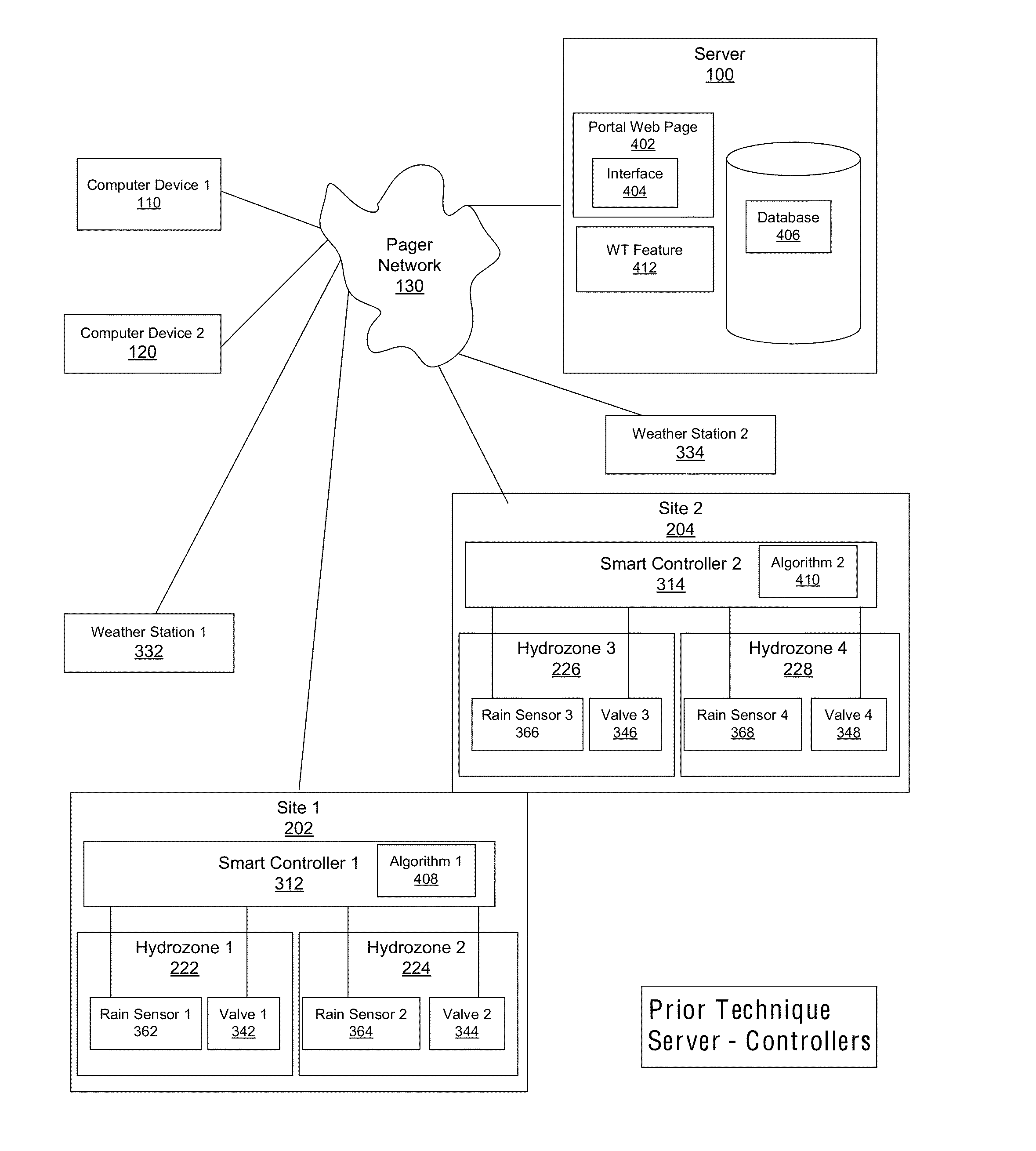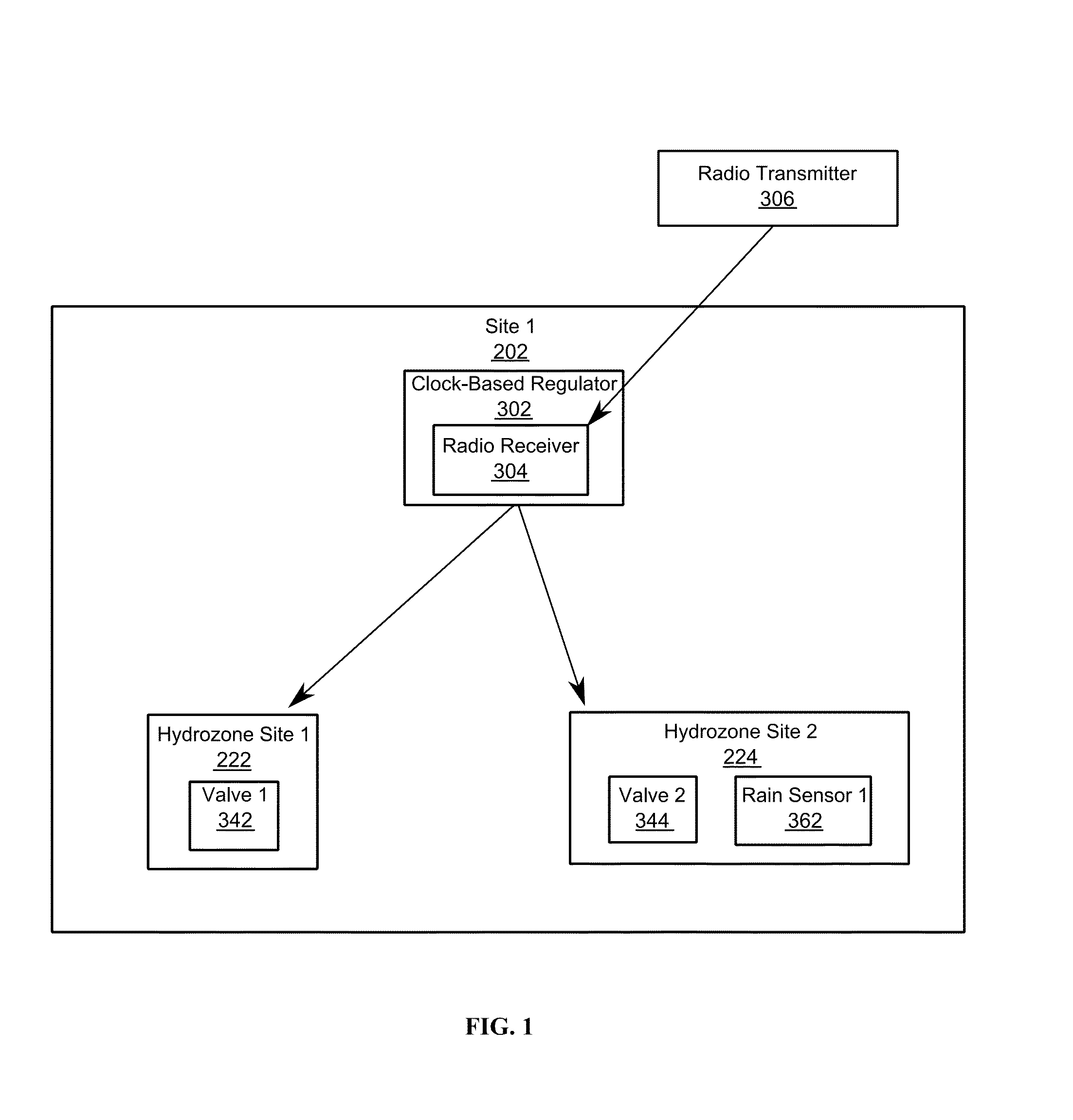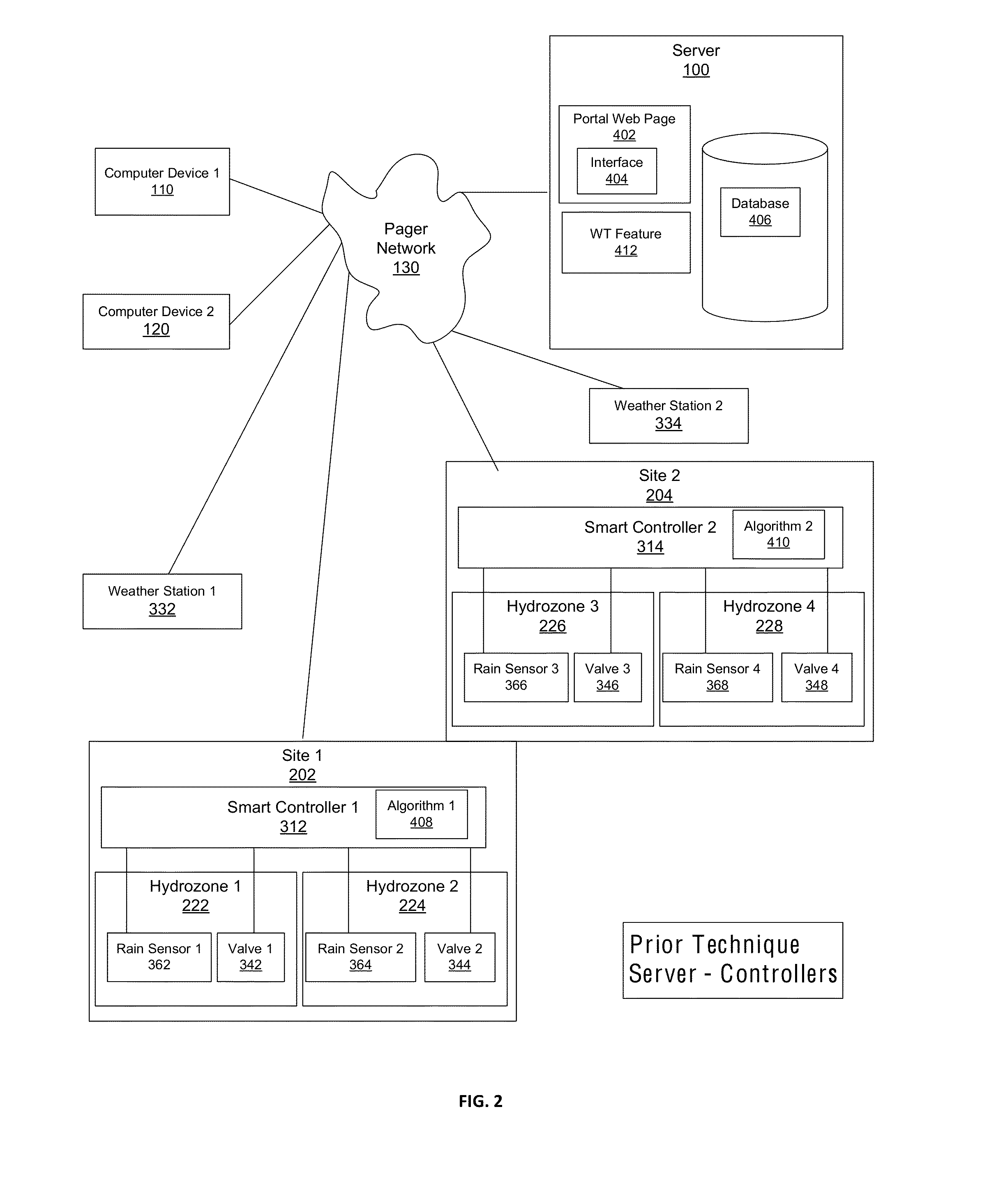System and method for automated, range-based irrigation
a range-based, automatic technology, applied in the direction of process and machine control, instruments, electric devices, etc., can solve the problems that the irrigation system has not been tightly monitored or controlled historically, and achieve the effect of reducing water waste, efficient modification, and delivering water more effectively
- Summary
- Abstract
- Description
- Claims
- Application Information
AI Technical Summary
Benefits of technology
Problems solved by technology
Method used
Image
Examples
example 1
Area Supervisor (AS)
[0340]An A.S. is in charge of monitoring the status and condition of clients C1, C2, and C3, plus property P1 of client C8. For this, he must do the following:[0341]Notify clients of any detected leaks;[0342]Send notices to irrigation contractors to make repairs on any valves that are stuck open, or closed;[0343]Determine that the appropriate amounts of water are being applied to each zone.[0344]Watch the total water use for the month, and compare this to historical water use, to gauge and / or alert his boss and / or clients as to potential overages for the month; and[0345]Look for any errors that may have occurred in the system during hours or days when no one is watching the system, and alert the appropriate people.
[0346]Monday morning the AS runs a copy of the dashboard 418, shown in FIG. 6, from his office computer 110. He opens the login screen and enters his user name and password. The dashboard 418 loads up, displaying his last saved layout.
[0347]To check for...
example 2
Field Assistant Operator (FAO)
[0354]A FAO helps people at the irrigation sites, such as clients, property managers, and landscape maintenance field personnel, who call in to perform tasks on the site. The FAO is called numerous times by various users, and she may be asked to:[0355]Operate field valves;[0356]Measure water flow; and[0357]Help callers locate physical entities within their sprawling landscape (such as controllers, zone valves, flow meters).
[0358]The FAO has two Dashboard Windows open on her multi-monitor computer system 120, shown in FIG. 6. The dashboard 418 on the left monitor is open to the Manual Operations module docked to the top, with the Log View module docked bottom left, and the Flow Meter Module docked bottom right.
[0359]When a user for client C1 calls in to open hydrozone 3 on their property P2, she selects the Manual Operations module, navigates to property P2, highlights the Zone Valve in the list of displayed valves, right-clicks and selects “Open . . . ”...
embodiment
Description of Embodiment
Environmental Credits Business Model
[0370]Another aspect of the invention is the opportunity to rapidly deploy improved control systems to save water for a community. In this example, a first entity such as an oil and gas producer may be depleting a resource such as groundwater. That entity can offset the use of the groundwater by sponsoring a water-savings program for a second entity, for example in exchange for the market value of the resource. In one example, the first entity contracts with a vendor to deploy the vendor's irrigation management systems for the second entity. The vendor installs and monitors the systems and measures the volume of water savings. This volume is then “credited” to the first entity to offset the waste of groundwater. For example, the first entity can utilize the water savings at the second entity as an offset of water overuse on the first entity's own project, or for an environmental stewardship advertisement campaign.
[0371]Thi...
PUM
 Login to View More
Login to View More Abstract
Description
Claims
Application Information
 Login to View More
Login to View More - R&D
- Intellectual Property
- Life Sciences
- Materials
- Tech Scout
- Unparalleled Data Quality
- Higher Quality Content
- 60% Fewer Hallucinations
Browse by: Latest US Patents, China's latest patents, Technical Efficacy Thesaurus, Application Domain, Technology Topic, Popular Technical Reports.
© 2025 PatSnap. All rights reserved.Legal|Privacy policy|Modern Slavery Act Transparency Statement|Sitemap|About US| Contact US: help@patsnap.com



